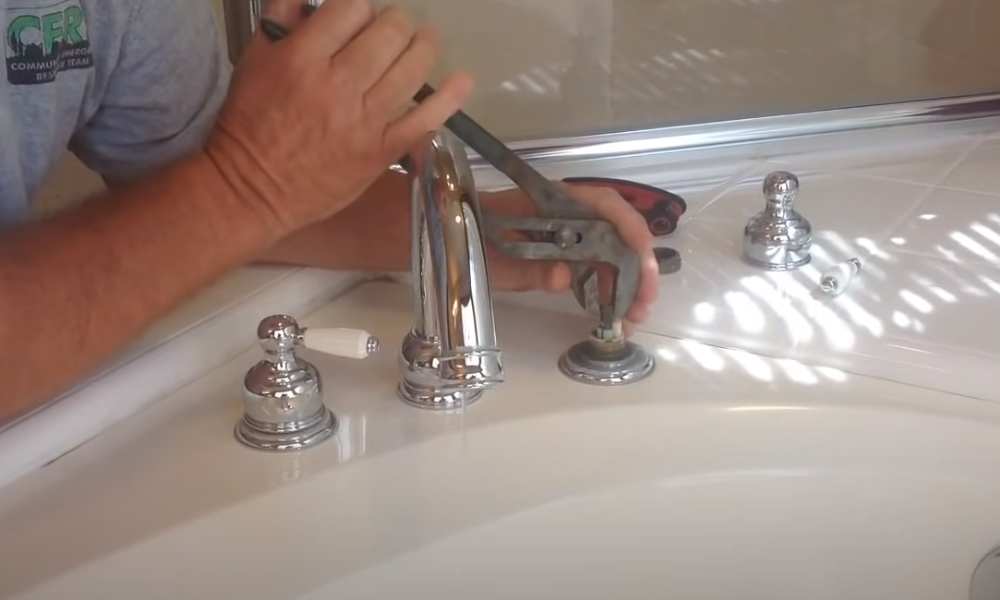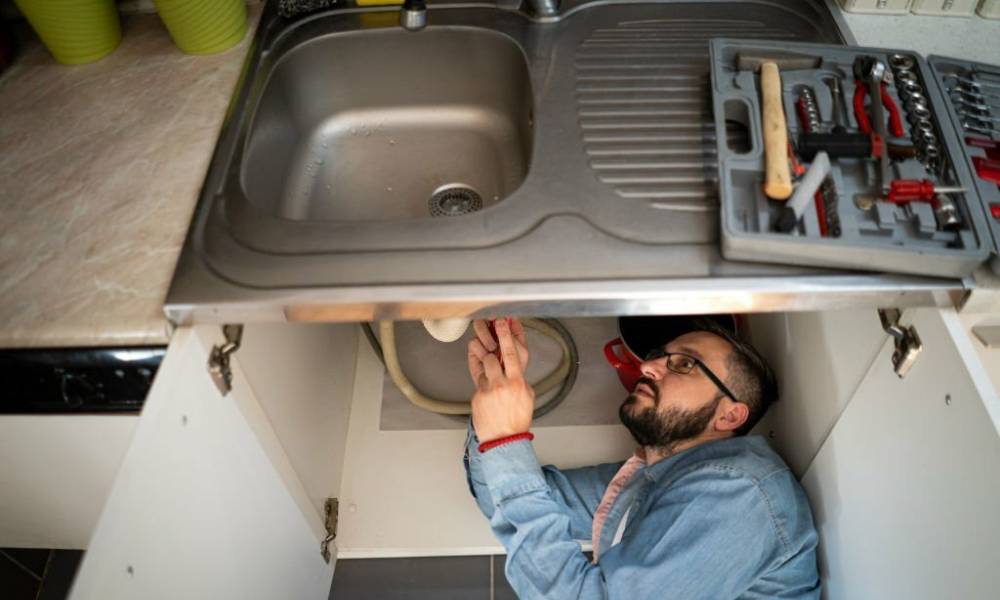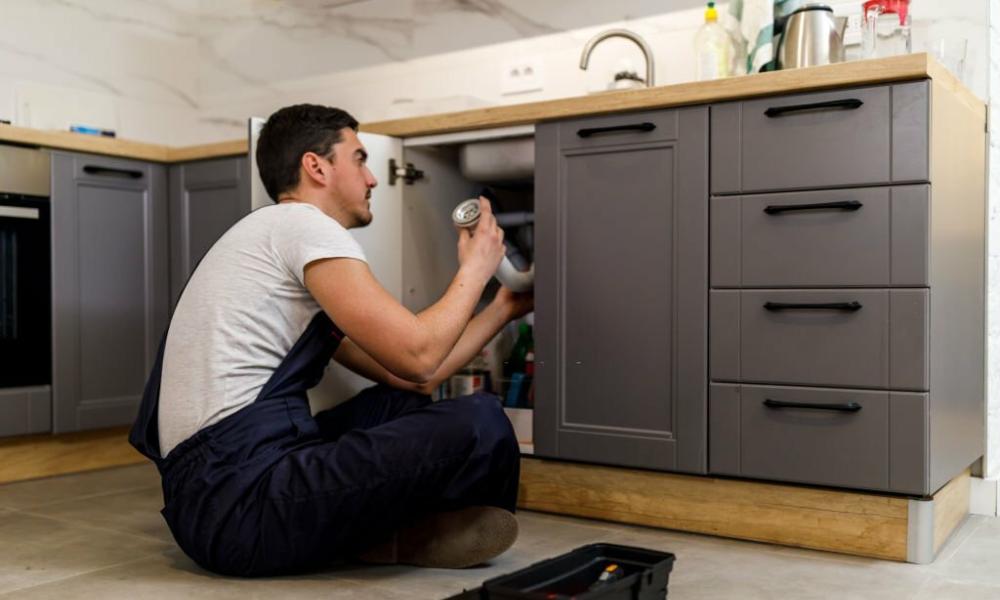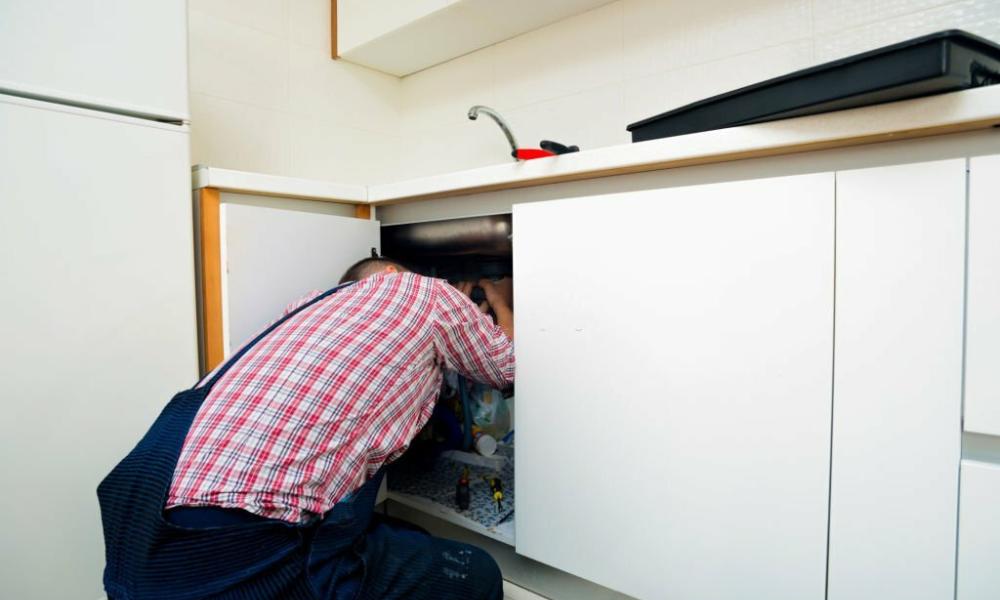Replacing a Roman tub faucet can be a daunting task, especially when there is no access panel to easily reach the plumbing fixtures. However, fear not, as this article serves as your comprehensive guide on how to replace roman tub faucet with no access panel. Imagine the satisfaction of upgrading your bathroom’s aesthetic with a new faucet design, all while defying the limitations posed by the lack of an access panel. In this step-by-step tutorial, we will unravel the mystery behind replacing a Roman tub faucet without access to its inner workings, empowering you to transform your space without unnecessary stress or complications.
Preparing For The Project
Before embarking on the task of replacing a faucet with no access, it’s crucial to take the necessary steps to prepare for the project. Assessing the situation, identifying the current style and features, and evaluating the access points are essential preliminary tasks that will ensure a smooth and successful replacement process.
Assessing The Tub Faucet Situation
Start by assessing the current state of the Roman faucet. Check for any visible signs of wear and tear, leaks, or corrosion. This initial assessment will provide a clear understanding of the condition of the existing and help you determine the extent of the replacement work required.
Identifying The Current Faucet Style And Features
Identifying the style and features of the current faucet is crucial for selecting a suitable replacement. Take note of the handle type, spout style, and any additional functionalities such as hand showers or diverter valves. This information will guide you in selecting a compatible replacement that matches the existing setup.
Evaluating The Access Points
- Determine if there are any removable panels or access points near the tub that may provide entry to the faucet connections.
- Consider the layout of the surrounding walls and the possibility of gaining access from adjacent spaces such as closets or utility rooms.
- If no visible access points are present, evaluate the feasibility of creating an access panel without causing extensive damage to the surrounding area.
Gathering The Necessary Tools And Materials
Gathering the necessary tools and materials is crucial before embarking on the task of replacing a faucet without a panel. This step ensures that you have everything you need to complete the job efficiently and safely. In this section, we will compile the essential tools, wrenches, screwdrivers, plumbing supplies, and safety gear required for the project.
Compiling The Essential Tools
Before starting the replacement process, gather all the essential tools needed for the project. Having the right tools can make the job much easier and save you time in the long run. Here are the must-have tools for replacing a faucet with no access panel:
Wrenches, Screwdrivers, And Plumbing Supplies
Wrenches, screwdrivers, and plumbing supplies are indispensable when it comes to tackling a plumbing project. The following tools and materials are necessary for replacing a Roman tub faucet:
- Adjustable wrench
- Basin wrench
- Plumber’s putty
- Teflon tape
- Screwdrivers (both flathead and Phillips head)
- Pipe wrench
- Caulk and caulking gun
Safety Gear: Gloves And Goggles
It is essential to prioritize safety when working on any plumbing project. To protect yourself, make sure to wear the appropriate safety gear, including gloves and goggles, to prevent any potential injuries or accidents during the replacement process.
Removing The Old Roman Tub Faucet
To replace a faucet without an access panel, start by turning off the water supply. Detach the handle, then remove the escutcheon and sleeve to reveal the valve. Use a cartridge puller to extract the cartridge, and replace it with a new one.
Shutting Off The Water Supply To The Tub
Before you start removing the old Roman faucet, it’s crucial to shut off the water supply to the tub. This will prevent any leaks or water damage during the replacement process.
Locating And Turning Off The Water Valves
Begin by locating the water valves for the tub. These are usually found near the tub, often in the bathroom or adjacent room. Turn the valves clockwise to close them and stop the water flow.
Disassembling The Existing Faucet
Once the water supply is turned off, it’s time to disassemble the existing. For this process, you may need a screwdriver, an adjustable wrench, and possibly a utility knife.
Removing Screws, Nuts, And Other Fixtures
Inspect the base of the faucet to identify any screws, nuts, or other fixtures holding it in place. Use the appropriate tools to remove these fasteners carefully, ensuring no damage to any surrounding components or surfaces.
Detaching The Faucet Handles And Spout
After removing the fasteners, carefully detach the handles and spout from the tub. Take your time to avoid any unnecessary force or damage to the plumbing fixtures.
To remove a sink faucet handle, start by locating the set screw underneath the handle. Use an Allen wrench or screwdriver to loosen and remove the set screw, allowing you to detach the handle from the faucet stem. Next, carefully unscrew the bonnet nut that secures the spout in place, using a wrench for added leverage if necessary.
Installing The New Roman Tub Faucet Without An Access Panel
When it comes to replacing a tub faucet without access, the task can seem daunting. But with the right knowledge and a bit of maneuvering, it is possible to install a new one with success. In this guide, we will cover the step-by-step process of installing the new faucet without a panel.
Selecting And Preparing The New Faucet
Before starting the replacement process, it’s crucial to select a new tub faucet that matches the specifications of the old one. Ensure that the new aligns with the existing mounting holes and measurements. Once the new faucet is chosen, gather the necessary tools and materials for the installation process.
Matching The Specifications Of The Old Faucet
Begin by examining the specifications of the old faucet, including its measurements, mounting hole locations, and any additional features. Make sure that the replacement matches these specifications to ensure a seamless installation process.
Navigating Through The Limited Access
With no access panel, maneuvering around the limited space to reach the old can be challenging. Carefully navigate around the tub to gain access to the old faucet without causing any damage to the surrounding area.
Maneuvering Tools And Materials Behind The Tub
Utilize the necessary tools and materials to reach behind the tub and remove the old faucet. This may involve using specialized tools and flexible equipment to access and work within the confined space behind the tub.
Securing The New Faucet In Place
Once the old faucet has been removed, carefully position and secure the new in place. Ensure that it is aligned correctly with the existing mounting holes and securely fastened to the tub to prevent any potential issues down the line.
Connecting And Tightening Fixtures
With the new faucet in position, proceed to connect and tighten the fixtures as per the manufacturer’s instructions. Ensure that all connections are secure and properly tightened to prevent leaks and ensure optimal functionality.
Testing For Leaks And Proper Functioning
After completing the installation, thoroughly test the new tub for any leaks or malfunctions. Run the water and check for any signs of leakage, as well as ensure that the faucet operates correctly.
Frequently Asked Questions
How To Identify If I Have A Roman Tub Faucet?
To identify a tub faucet, look for separate hot and cold water handles and a high, arching spout. faucets are often found in larger bathrooms and are installed directly on the bathtub, not on the wall.
What Tools Do I Need To Replace A Roman Tub Faucet?
You’ll need a wrench, screwdriver, plumber’s putty, and possibly a tube cutter if you need to replace pipes. It’s also helpful to have a flashlight to see in dark areas. Additionally, consider a towel or rag to catch any excess water.
Can I Replace A Roman Tub Faucet Without An Access Panel?
Yes, it’s possible to replace a faucet without a panel, but it may require some extra effort. You may need to cut access yourself or use alternative methods for installation and repairs, such as through the ceiling below the tub.
Be prepared for some challenging work.
Conclusion
By following the step-by-step instructions provided in this article and being patient and meticulous throughout the process, you can complete the task. Remember to turn off the water supply before starting and take your time to avoid damaging any surrounding fixtures or surfaces. With careful planning and execution, you can enjoy a newly installed Roman tub faucet that enhances the look and functionality of your bathroom. Take on this home improvement project confidently and enjoy the satisfaction of a job well done.




